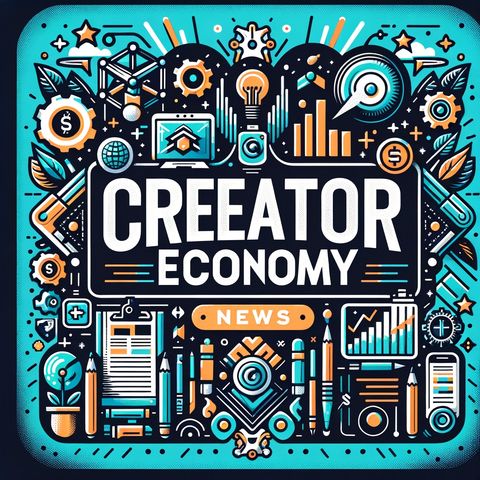14 NOV. 2024 · The Creator Economy, a rapidly expanding ecosystem of independent content creators, curators, educators, and influencers, is experiencing significant growth and transformation. As of 2024, the Creator Economy is valued at approximately $189.74 billion, with projections to exceed $2.71 trillion by 2037, growing at a compounded annual growth rate (CAGR) of over 22.7% between 2025 and 2037[1].
### Market Size and Growth
The industry has seen a substantial increase in value, with estimates suggesting it was worth around $104.2 billion to $250 billion in 2023, depending on the source[3][5]. This growth is driven by the increasing use of digital platforms, user-friendly creation tools, and direct fan connection channels, which have lowered the barriers to content production and distribution.
### Platform Dominance
Video streaming platforms, such as Netflix, Hulu, and Amazon Prime Video, are leading the charge, with the video streaming segment expected to account for 30% of the global creator economy market from 2024 to 2037. The demand for high-quality content and the rise of OTT services are key drivers of this growth[1].
### Creative Services
Digital content creation is another significant segment, anticipated to capture a 30% share during the forecast period. This is fueled by the increased use of cloud computing, IT investments, and the adoption of AI, which enhance productivity and reduce operational costs[1].
### Geographic Focus
The North American market is set to capture the highest revenue share, around 33%, due to the early adoption of creative platforms and tools by influencers and independent creators. Live streaming is a common method for creators in this region to interact with their audiences and generate income[1].
### Monetization Trends
Creators are diversifying their monetization strategies, with live streaming, ad-revenue share programs, and paid subscriptions being the most popular methods. However, brand sponsorships have seen a 14% decrease, reflecting creators' balance between personal beliefs and creative independence[4].
### AI Integration
AI tools are increasingly being used in content creation, with 84% of creators leveraging AI to boost productivity, save time, and reduce costs. AI helps in researching, producing, and outlining content more efficiently, although concerns about quality, originality, and plagiarism persist[4].
### Consumer Behavior
Consumers are more likely to trust content from nano and micro-influencers who are highly engaged with their audiences. The demand for user-generated content (UGC) has increased, with 55.8% of brands prioritizing UGC in their influencer campaigns, up from 45% in 2023[3].
### Challenges and Optimism
Despite challenges in monetization, 73.1% of creators are optimistic about income growth in 2024, driven by expanding monetization options and strategic content diversification. However, the industry faces saturation in niche verticals, necessitating more effort to stand out[4][5].
### Regulatory and Market Changes
There are no significant regulatory changes reported recently, but the industry is maturing with brands becoming more strategic about influencer marketing. Social platforms are encouraging consumers to spend while scrolling, and creators are adapting by bringing in external managers or business partners to help with growth strategies[5].
In summary, the Creator Economy is experiencing robust growth, driven by technological advancements, changing consumer behaviors, and the increasing importance of digital content. Industry leaders are responding to challenges by diversifying their monetization strategies, leveraging AI, and focusing on personal branding and user-generated content. As the industry continues to mature, it is poised for significant financial and creative growth.


